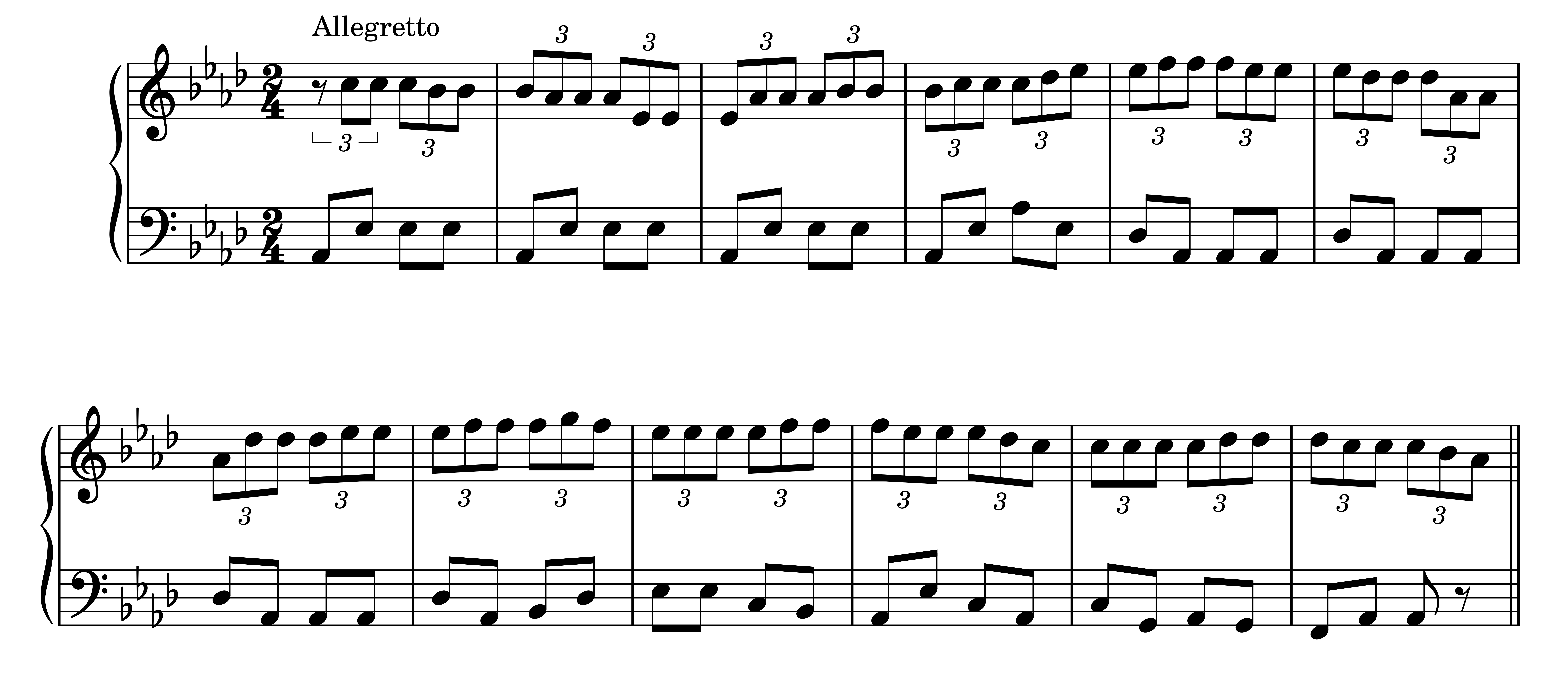Compound Intervals and Triads
77 Sight Singing Assignment
Rhythmic Duets in Polyrhythms, 2:3 and 3:2
Learn this first example by tapping the upper line with your right hand and the lower line with your left hand. Also prepare them by clapping one line and chanting “Tah” on the other (practice this both ways). Be prepared to perform them as a chanted duet with your instructor too.

In the next example, the introductory measure demonstrates the “big picture” (composite) rhythmic pattern of what two against three sounds like, using the mnemonic “nice cup of tea.” Notice that the second eighth note in the lower part lines up with the “of” of “nice cup of tea.” Keep this pattern going over the next two measures.

Rhythmic Duets in Polyrhythms, 3:4 and 4:3
The introductory measure uses the mnemonic “pass the bread and butter” to show the “big picture” rhythm of three against four. Measure 2 breaks down the polyrhythm into subdivisions that show the “common factor” of three and four – that is, 12. Measure 3 spells out the exact note values we incur if we attempt four equal note values within 3/4. Measure 4 sounds exactly the same as measure 3, just using an alternative form of notation that you will often come across in music scores.

The next example reverses the roles so that the voice chants three beats and the hands clap four. Once more, the last two measures show two different ways of notating the same thing.

Melodic Duets with Polyrhythms
Practice these with a partner. Be prepared to sing either part in a duet with your instructor.
Maurice Ravel, String Quartet in F Major (1903), II. Assez vif – très rythmé

Frédéric François Chopin, 3 Nouvelles Études B. 130, No. 2

Wolfgang Amadeus Mozart, Piano Concerto No. 21, K. 467, II. Andante

Harmony: Secondary Dominants and Tonicization
Practice changing your solfege from that of the home key to that of the tonicized key. If you find it hard to make the switch, build some intermediary steps from the scales of the “old” and “new” keys to help you navigate from note to note. In the C minor example, be careful to sing B-flat and not B-natural in the second measure.


